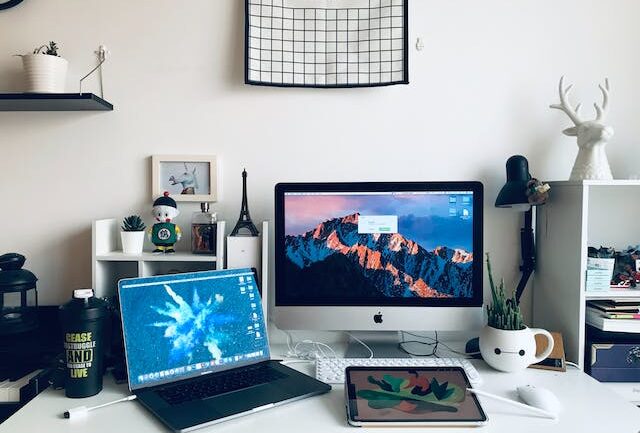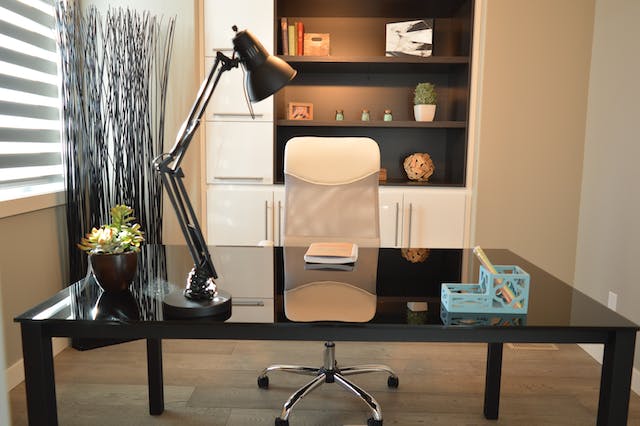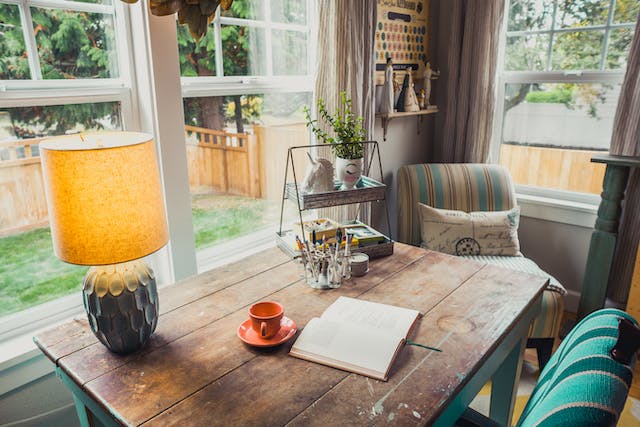How to Create a Functional Home Office in a Small Space

Creating a functional home office in a small space is not just a desire; it’s a necessity for many. With the shift towards remote work, the challenge of fitting a productive workspace into limited quarters is real. This article addresses this challenge head-on. Here, you can find practical tips for quick renovation projects that will transform even the smallest nook into an efficient home office. A goal is to help you maximize your space, guaranteeing comfort and productivity, regardless of its size.
Assessing Your Space to Create a Functional Home Office
The first step in creating a functional home office in a small space is a detailed evaluation of the available area. Accurate measurement is key to understanding the dimensions you have to work with. When measuring, consider the floor space, height, and potential storage areas on walls. Visualize how different furniture layouts might work using online tools or simple graph paper. The right spot for your home office should balance quietness for concentration and accessibility for ease of use.

Finding the ideal location for your home office should strike a balance between accessibility for ease of use and peacefulness for focus.
In your home, unconventional spaces can often hold untapped potential. For instance, the potential of your new home’s top floor might be perfect. This space can offer seclusion away from daily household noise and distractions. Also, consider the natural light available here and the feasibility of setting up electrical points for your equipment. This approach makes efficient use of your living space and adds a new dimension to your work-from-home experience.
Choosing Space-Saving Furniture
Selecting the right furniture is vital to maximize space utility in a small home office. Compact desks are a must; look for options that fit snugly into your designated area. Check for desks with built-in drawers or shelves, as they can reduce the need for additional storage units. For chairs, prioritize ergonomics and a small footprint. Comfort is key, as you’ll spend a lot of time sitting.
Multi-functional furniture is a game-changer in small spaces. Think of a desk that doubles as a bookshelf or a fold-out table that can be tucked away when not in use. These furniture pieces save space and offer the flexibility to adapt your home office according to your needs.
Smart Storage Solutions
Storage is a critical component of a small home office. So, if you want to make the most of your space, look upwards. Vertical storage solutions, like floating shelves or tall, narrow cabinets, can be a great way to use wall space effectively. This approach frees up floor space, making your office feel less cramped. Organize items by frequency of use, keeping the most needed items within easy reach.
When considering storage, sometimes items can be stored outside the home office. If you’re thinking about renting a storage unit, there are several things to keep in mind. Security, cost, and accessibility are important factors. This option can be particularly useful for items you don’t use regularly, helping keep your immediate work environment clear and focused.
Lighting and Ergonomics
Lighting plays a vital role in creating a productive workspace. Position your desk to maximize the use of natural light, which can enhance your mood and energy. In situations where natural light is limited, invest in quality artificial lighting options that mimic daylight and reduce eye strain. Desk lamps with adjustable arms are particularly useful as they can be repositioned as needed.
Setting your desk in the best possible position to take advantage of natural light can improve your energy and attitude.

Ergonomics is equally important, especially in constrained spaces. Choose a chair with good lumbar support and adjust your screen to eye level to avoid strain. Small ergonomic accessories like keyboard trays or monitor stands can make a significant difference. Remember, comfort in your workspace can directly influence productivity and health.
Personalizing Your Space
Personalizing your home office is about striking a balance. You want to create a space that reflects your personality and maintains a professional feel. Choose a few key items that inspire you, like artwork, photos, or plants. These items should add to the space without creating clutter. The goal is to create a space that motivates you to work.

Establish a space that captures your individuality while still feeling professional.
Consider the functionality of each decorative item you add. Use stylish yet practical items like decorative storage boxes or unique pen holders. These pieces can add personality to your space while keeping it organized and functional. This approach helps maintain a balance between a personalized and a professional workspace.
Tech Setup for Small Spaces
In small home offices, choosing the right technology is crucial. Opt for compact, space-saving devices like laptops or all-in-one computers. These devices take up less room and can be easily moved if you need to reconfigure your space. Pay attention to the tech specifications to ensure they meet your work requirements.
Effective cable management is essential to maintain a tidy and safe environment in a small space. Use cord organizers, clips, or ties to keep cables neatly bundled and out of the way. A strong, reliable internet connection is also crucial. Consider the placement of your router and use Wi-Fi extenders if necessary to ensure consistent connectivity.
Maintaining a Productive Atmosphere
In a small home office, minimizing distractions is key. Set clear boundaries for your work area to separate it from the rest of your home. This separation helps in maintaining a work-life balance, which is crucial in small spaces. Use techniques like noise-cancelling headphones or room dividers to create a distinct work environment.
To maintain a productive atmosphere, be aware of common renovation mistakes to avoid. Overcrowding your space with furniture or decorative items can make it feel cramped and hinder productivity. Instead, aim for a minimalist setup that focuses on functionality. Regularly declutter and organize your space to keep it conducive to work.
Final Words
Establishing a functional home office in a small space can be straightforward and effective. From carefully assessing your space, choosing the right furniture, implementing smart storage, and maintaining an organized environment, you can create a practical and enjoyable workspace. These tips aim to help you efficiently use your available space, ensuring your small home office is a comfortable and productive area for your work needs.

